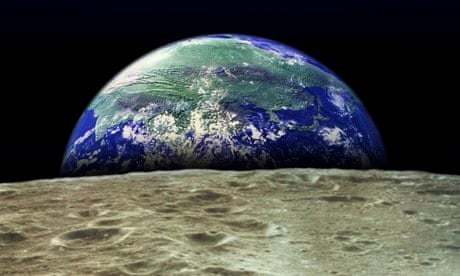We live on an incredible planet – the only one to support life, as far as we know. Astronomers have observed more than 1,000 exoplanets (worlds circling other stars), and estimate that there could be at least 17bn Earth-sized exoplanets in the Milky Way galaxy alone. Most of these planets are uninhabitable: too hot or too cold for water to be liquid on the surface. And the few that are habitable rarely stay habitable for long.
"Earth is an oddball – a planet that has been lucky enough to have had 4bn years of good weather," says David Waltham, geologist at Royal Holloway, University of London, and author of Lucky Planet. Waltham argues that Earth's moon has been critical: had it been a fraction bigger or smaller then Earth would have had an unstable axis or faster spin, resulting in climate chaos.
Then there is plate tectonics, which started around 2bn years ago and helped to create lots of land, and Earth's magnetic field, which prevents us from being fried by the solar wind. And finally there is life itself, which according to the Gaia hypothesis, evolves to maintain optimum conditions for life.
If Waltham is to be believed the chances of finding intelligent life elsewhere are vanishingly small: Earth is a truly special place. And each month Earthwatch will celebrate our wonderful planet. From earthquakes to volcanoes, and dinosaurs to deep Earth dynamics, we'll keep abreast of its activity and marvel at this fascinating rocky lump we call home.

Comments (…)
Sign in or create your Guardian account to join the discussion